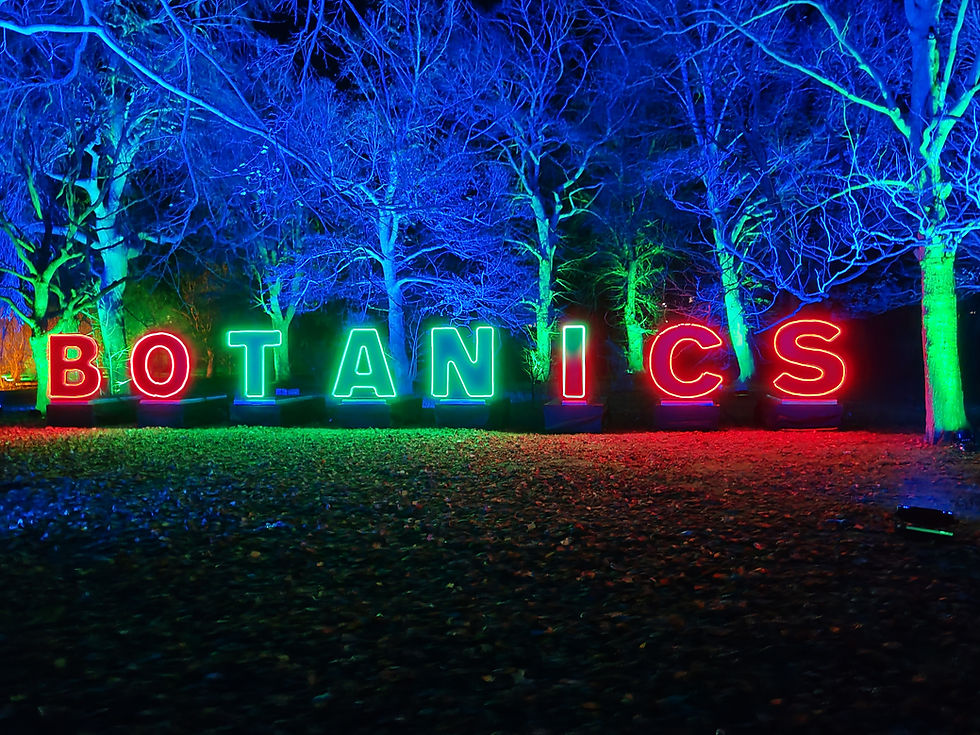'The Typewriter Revolution' at the National Museum of Scotland
- Wee Walking Tours

- Aug 10, 2021
- 3 min read
“There is a wonderful way to spend time typing. You get to think about it. You get to romantically sit back and ponder what your next words are going to be and that is a pleasant tactile action. It actually turns writing or composing into a very specific, physical process that has a soundtrack to it”. – Tom Hanks in the documentary, California Typewriter (2016)

I don’t know about you, but, for me, Tom Hanks’ words have a lovely way of setting the tone for this week’s blog post. The Typewriter Revolution is a wee exhibition that is currently on show at the National Museum of Scotland, and it filled this writer’s soul with renewed inspiration and purpose.
The typewriters on display demonstrate an evolution of a machine that has had far-reaching impacts around the world. At the Museum, you can see some of the earliest forms of the typewriter, with some successful models as well as ones that didn’t quite make the cut.

One of my personal favourites on display was the Sholes and Glidden typewriter. With its beautiful signature floral ornamentation, it dates to 1876 and is noteworthy because it was the first typewriter to use the QWERTY layout. QWERTY make up the first six letter keys on the top row and are still the standard for English language keyboards today.

However, as I’ve stated many times on this blog, it’s the stories behind the artefacts that are what compels most of us. According to the exhibition, the Sholes and Glidden typewriter pictured above was donated to the Museum in 1904 by Ethelinda Hadwen. They provide further context by pointing out that Ethelinda and her business partner, Elizabeth Fleming, “opened the first typewriting office in Scotland, based in Edinburgh’s New Town”. Ethelinda was a prominent advocate for women’s rights, and that leads us to one of the most important aspects of this exhibition.
What is particularly significant about the typewriter is that it allowed for a revolution for women- work opportunities that empowered them like never before. A seemingly simple machine opened the door for women in incredible ways. For example, they were able to work in more professional settings with decent wages (compared to their previous limited options such as working in factories under dismal conditions). Overall, the typewriter helped to lay the ground work for further advances in women’s rights and this connection must not be forgotten.

While the typewriter had many successful models, there were also some interesting unsuccessful attempts. As you can see below, the Lambert typewriter took a different approach by creating a circular key layout. Unfortunately, it could not compete with the more practical QWERTY keyboard and was commercial failure. I imagine it was probably quite time consuming to try to type out longer documents.

Scotland also played its role in the world of typewriters with factories in Glasgow that manufactured models for Remington and Olivetti. Olivetti was an Italian company that produced stylish and iconic typewriters. Their Lettera 22 was a portable typewriter and was popular with such famous writers as Sylvia Plath and singer-songwriter Bob Dylan.

Of course, in contemporary times, personal computers are king when it comes to typing needs. It is amazing to think that many in the younger generations don’t even know about typewriters. Although I am happy that they have had a bit of renaissance in the past decade. To be honest, I haven’t used a typewriter in almost 30 years (a Smith-Corona electric to be specific). Yet, after wandering through the Museum’s delightful exhibition, I admit I have a strong sense of nostalgia and longing to use a typewriter again. There is something about the way it puts you more in touch with your thoughts and focused on the writing process as a whole.
The National Museum of Scotland does a fantastic job at providing a fascinating overview of how the typewriter has been more than just a machine. It served as a tool that advanced women’s rights in revolutionary ways and held a crucial role in the development of media technology. That is a history we must remember.

If you are in Edinburgh, we highly recommend you visit the National Museum of Scotland. It is one of our favourite museums, and we have previously written about them including their East Asian and Ancient Egyptian permanent galleries. As of the writing of this post, in addition to the Typewriter Revolution exhibition, the Museum also has the spectacular Galloway Hoard on display. Both exhibitions are free, but advanced booking is required. So, what are you waiting for?! Book your museum visit now, and while you’re at it, be sure to book a Wee Golden Walk with us as part of your Edinburgh itinerary.
Until next time- Explore & Discover and remember- The Revolution will be Typewritten!



